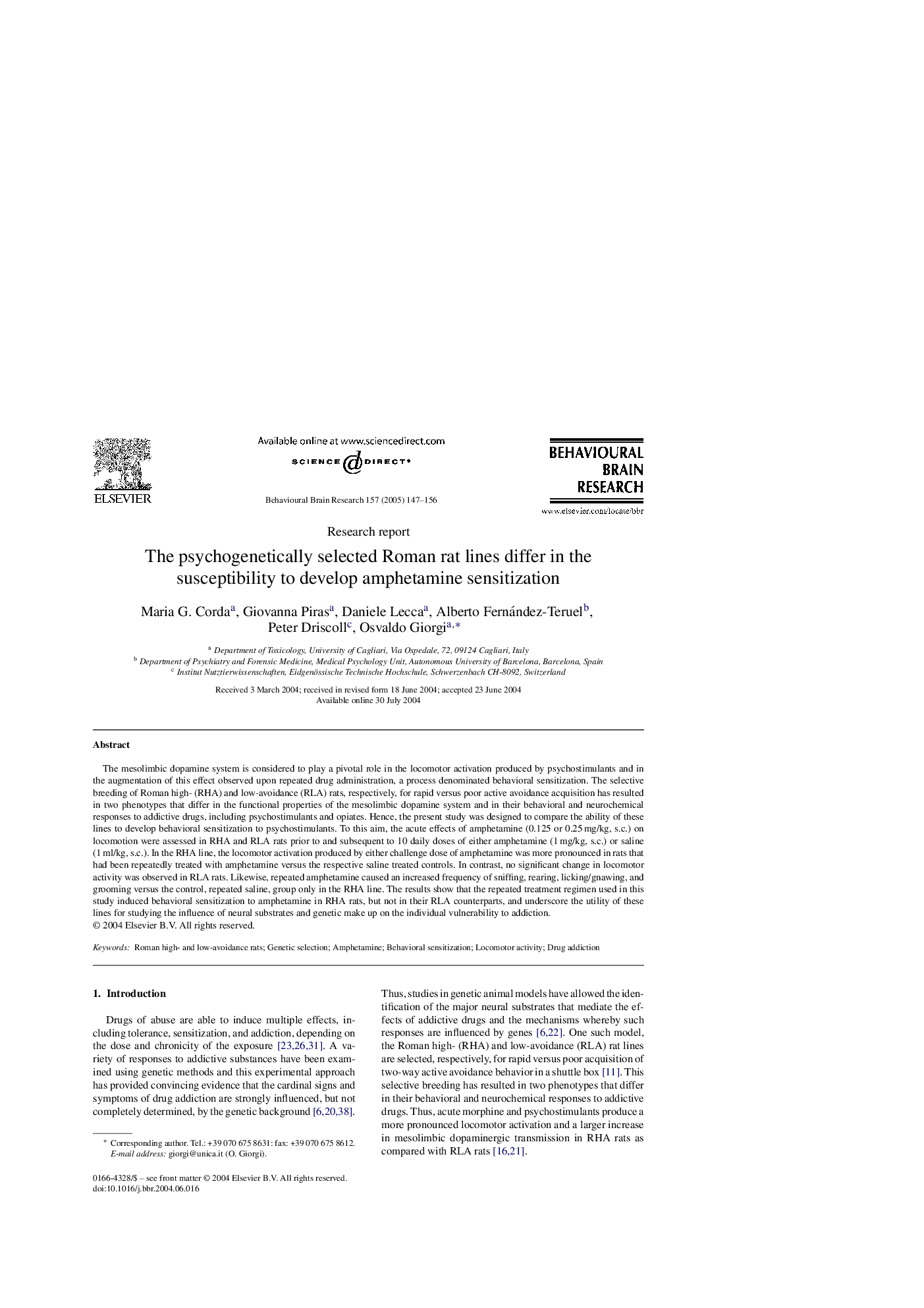| Article ID | Journal | Published Year | Pages | File Type |
|---|---|---|---|---|
| 9406912 | Behavioural Brain Research | 2005 | 10 Pages |
Abstract
The mesolimbic dopamine system is considered to play a pivotal role in the locomotor activation produced by psychostimulants and in the augmentation of this effect observed upon repeated drug administration, a process denominated behavioral sensitization. The selective breeding of Roman high- (RHA) and low-avoidance (RLA) rats, respectively, for rapid versus poor active avoidance acquisition has resulted in two phenotypes that differ in the functional properties of the mesolimbic dopamine system and in their behavioral and neurochemical responses to addictive drugs, including psychostimulants and opiates. Hence, the present study was designed to compare the ability of these lines to develop behavioral sensitization to psychostimulants. To this aim, the acute effects of amphetamine (0.125 or 0.25Â mg/kg, s.c.) on locomotion were assessed in RHA and RLA rats prior to and subsequent to 10 daily doses of either amphetamine (1Â mg/kg, s.c.) or saline (1Â ml/kg, s.c.). In the RHA line, the locomotor activation produced by either challenge dose of amphetamine was more pronounced in rats that had been repeatedly treated with amphetamine versus the respective saline treated controls. In contrast, no significant change in locomotor activity was observed in RLA rats. Likewise, repeated amphetamine caused an increased frequency of sniffing, rearing, licking/gnawing, and grooming versus the control, repeated saline, group only in the RHA line. The results show that the repeated treatment regimen used in this study induced behavioral sensitization to amphetamine in RHA rats, but not in their RLA counterparts, and underscore the utility of these lines for studying the influence of neural substrates and genetic make up on the individual vulnerability to addiction.
Keywords
Related Topics
Life Sciences
Neuroscience
Behavioral Neuroscience
Authors
Maria G. Corda, Giovanna Piras, Daniele Lecca, Alberto Fernández-Teruel, Peter Driscoll, Osvaldo Giorgi,
